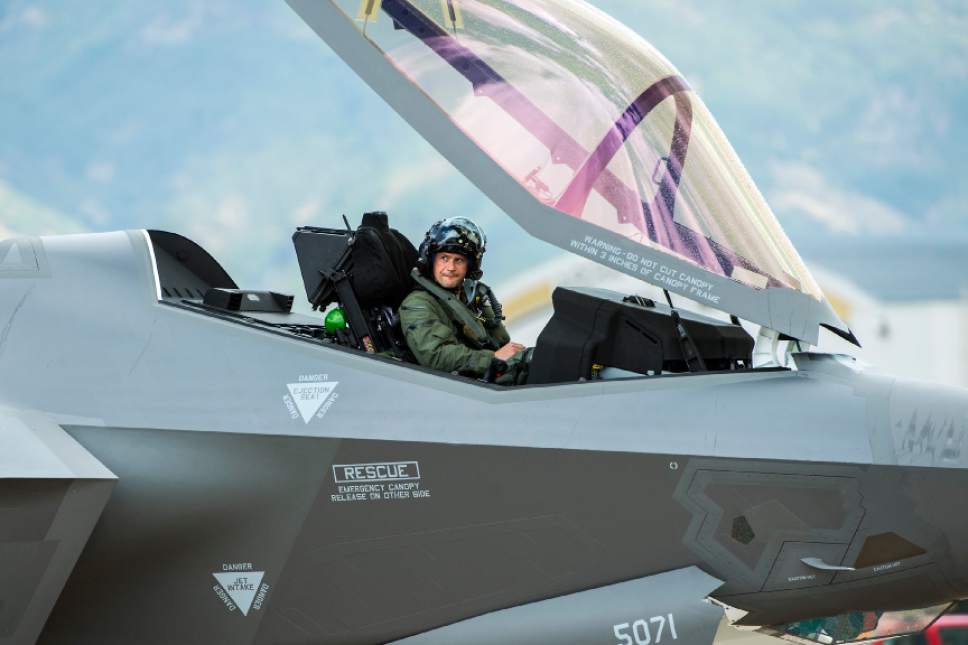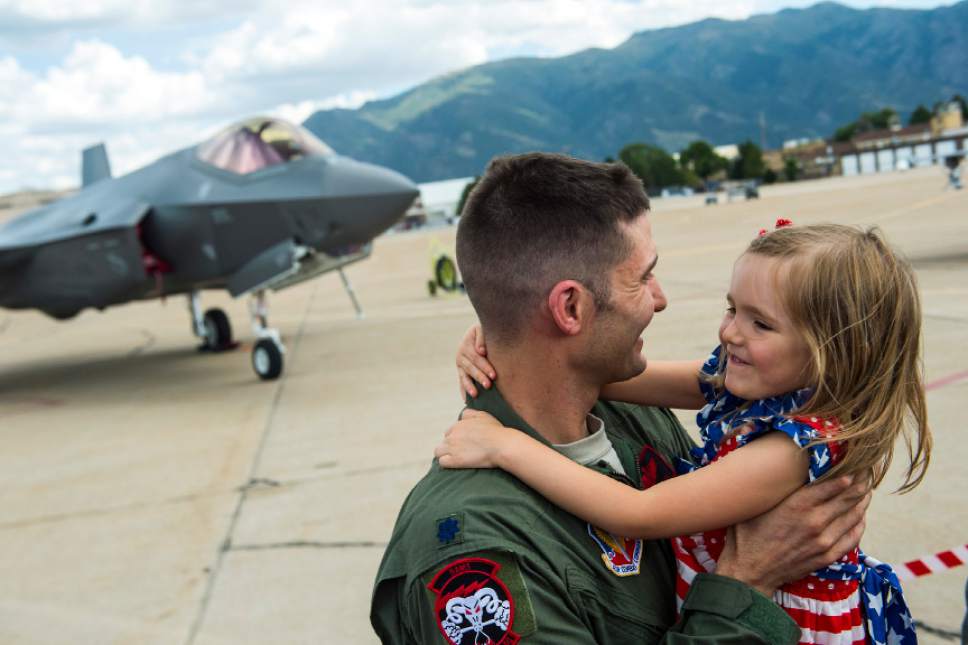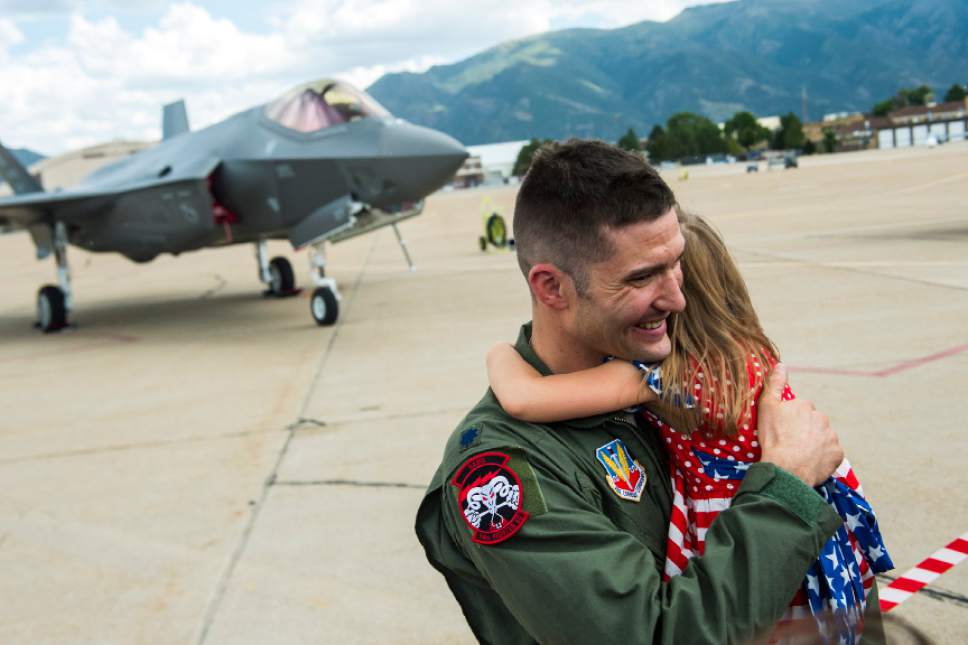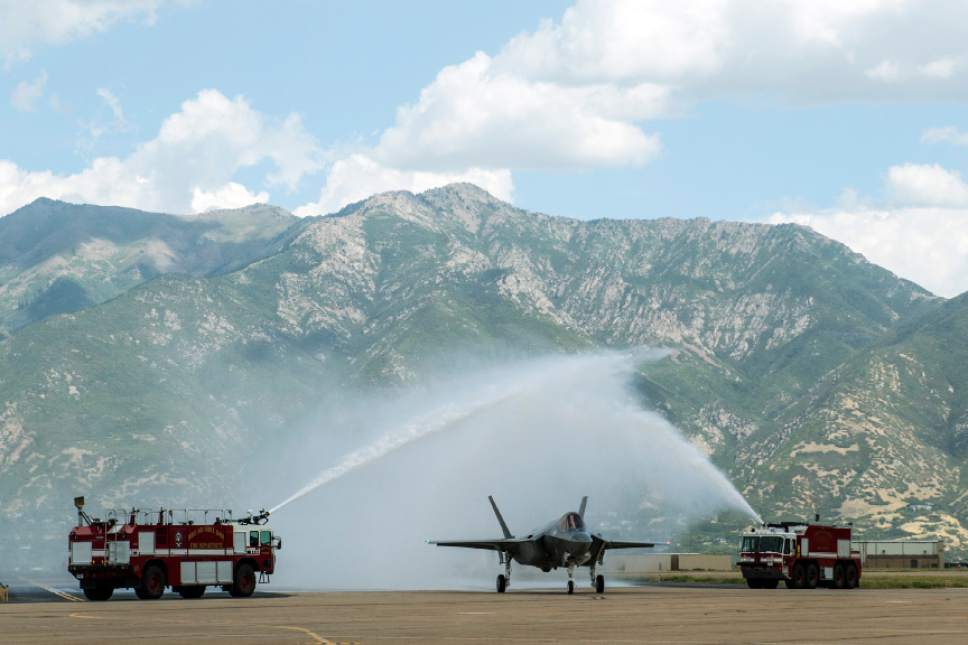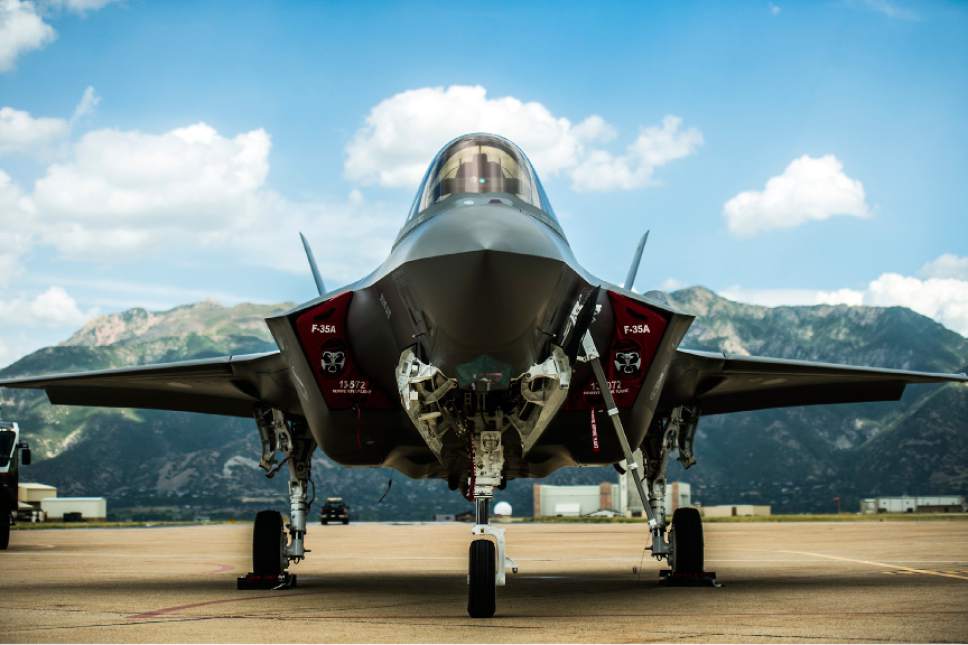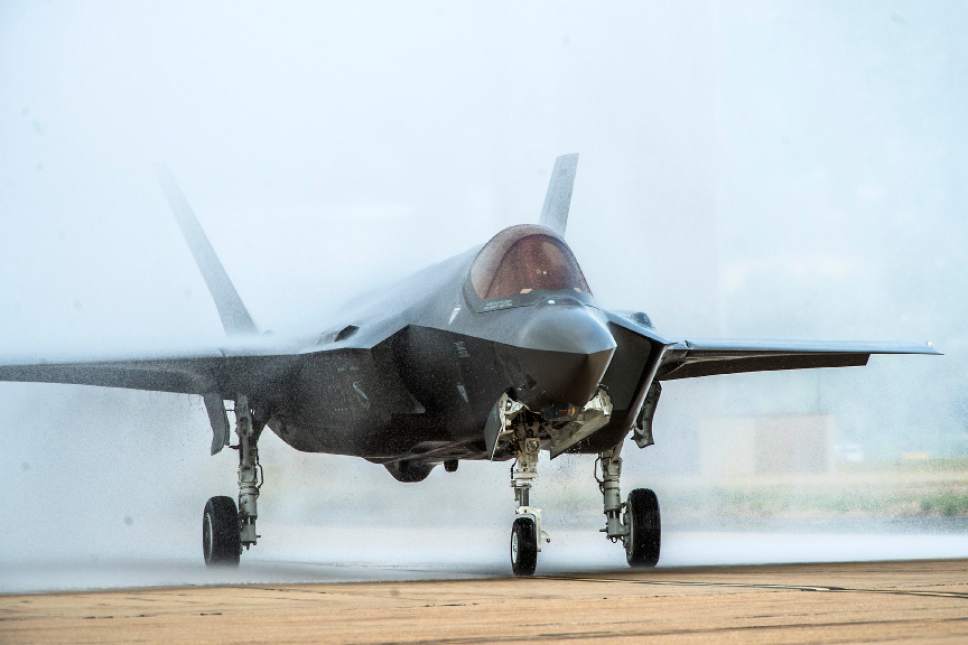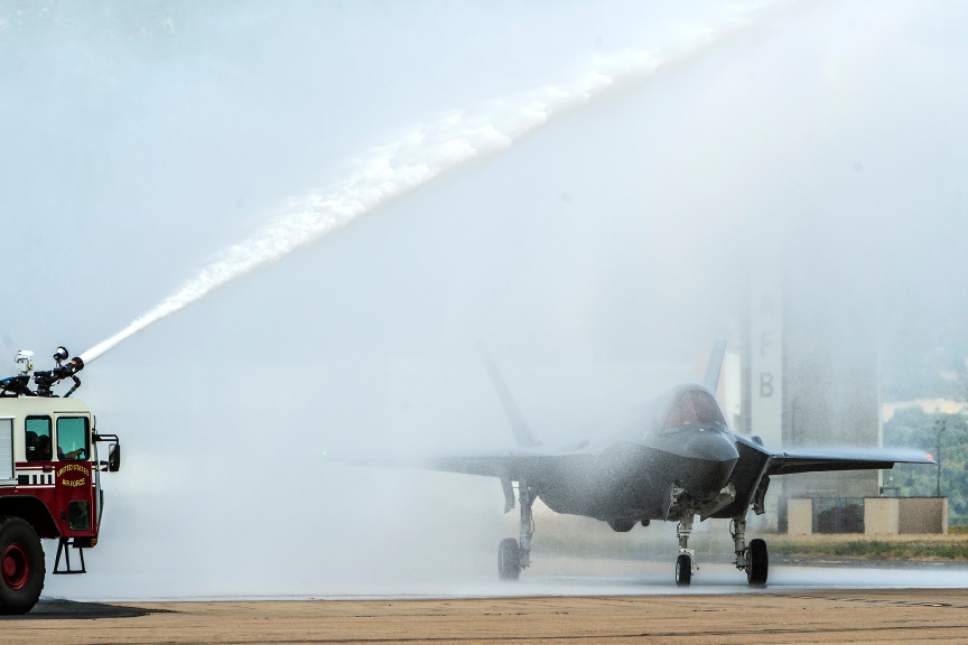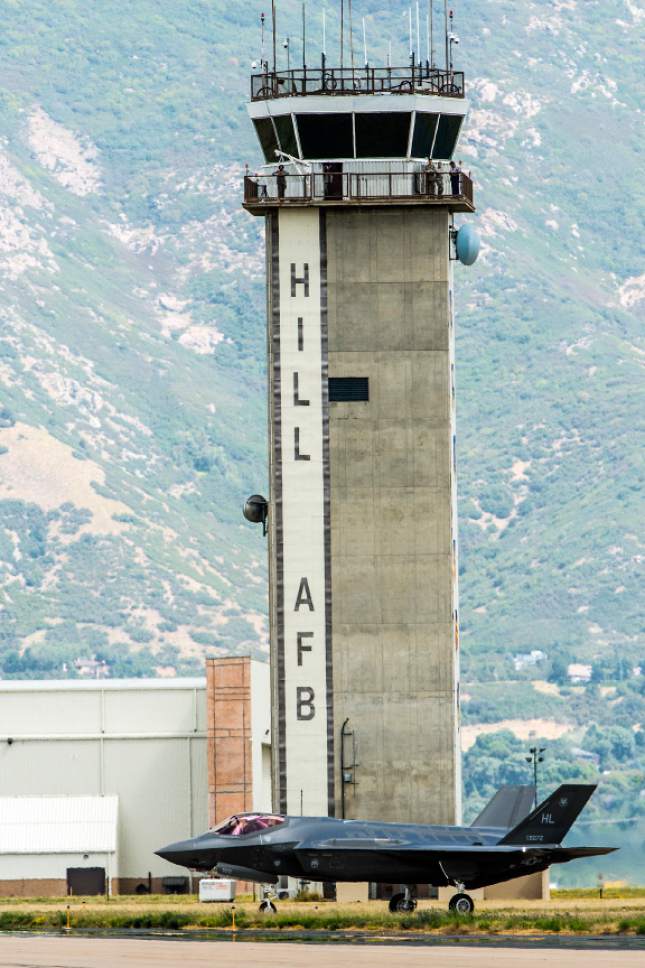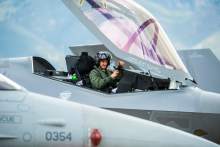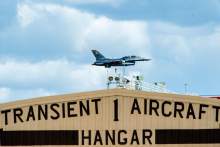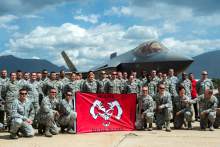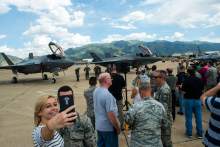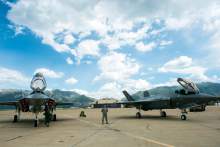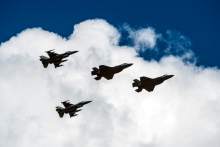This is an archived article that was published on sltrib.com in 2015, and information in the article may be outdated. It is provided only for personal research purposes and may not be reprinted.
Hill Air Force Base • The first two of what will eventually be a squadron's worth of F-35s arrived here Wednesday even as questions remain about the fighter jet's capabilities.
Two F-35s, flying in formation with two F-16s, roared south over Hill Air Force Base at 1:04 p.m., then turned southeast to fly above the Wasatch Mountains.
Nine minutes later, the first F-35 landed on the runway. Fire trucks sprayed water into the air to form a liquid arch as the jet taxied to a crowd of a couple hundred Air Force officers, enlisted personnel, civilians and journalists attending a welcoming ceremony.
Col. Brad "Detroit" Lyons, commander of the 388th Fighter Wing and who flew one of the F-35s from the Lockheed Martin production facility in Texas, then took to the podium and declared it a great day for Hill Air Force Base, Utah and the Air Force.
"Ladies and gentlemen, welcome to a new dawn in tactical aviation, and a new day for Hill Air Force Base," Lyons said.
More F-35s will trickle in through 2016 until about 72 of the jets make Hill Air Force Base their home. The jets will belong to the 388th Fighter Wing and will eventually replace its F-16s.
The 419th Fighter Wing, a reserve unit at Hill Air Force Base, will fly the F-35s, too. The 419th's commander, Co. Bryan Radliff, said it will eventually have 36 pilots qualified to fly the F-35. Those pilots will be on active status until they gain qualification, about a three-month training process.
Hill Air Force Base already has performed maintenance on F-35s belonging to the Air Force, Marine Corps and allies such as the Netherlands. But having its own squadron of F-35s to fly ensures Hill and the 388th and 419th will have a combat role with the F-35.
Or at least it will eventually.
The Air Force version of the F-35 has perhaps three more years of testing and development before it can enter combat. Among the biggest obstacles facing the aircraft is the development of the software that runs all its systems, said Dan Grazier, a fellow at the Project On Government Oversight, a Washington, D.C., organization that has been critical of the F-35 and the $1.4 trillion its expected to cost over its lifespan.
"It's definitely not going to be 100 percent of what [the military] is saying," Grazier said.
In one example, the software problems currently prevent the F-35 from firing its cannon, Grazier said. That is important because the F-35 is supposed to replace an existing aircraft, the Air Force's A-10, in providing firepower to objects on the ground and protect troops.
"It's suppose to be a close-air support aircraft, but they can't even fire the gun," Grazier said.
After Grazier's comments appeared on The Tribune's website, Lockheed Martin sent the newspaper a URL to a video showing a stationary F-35 firing its 25 mm gun at a target.
Any F-35 limitation were not discussed Wednesday. After speakers lauded the aircraft, pilots, airmen and their families posed for selfies in front of the F-35s and with their families.
Speaking to reporters after the ceremony, Lyons said the 388th's F-35s will be operational by the end of 2016, but it he said he wouldn't be comfortable seeing the F-35 in combat until after 2019.
"It's where it needs to be for this point in the development," Lyons said, "and it will be a tremendous platform. Mark my words."
Twitter: @natecarlisle


